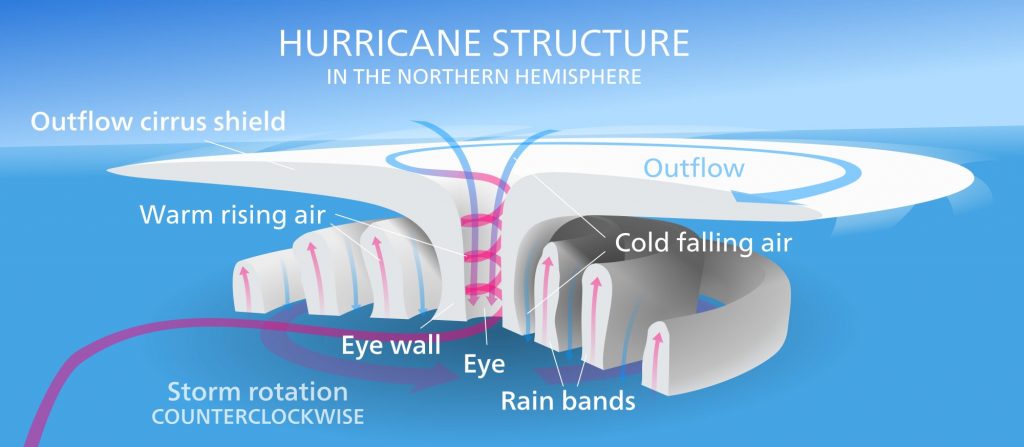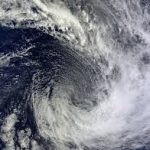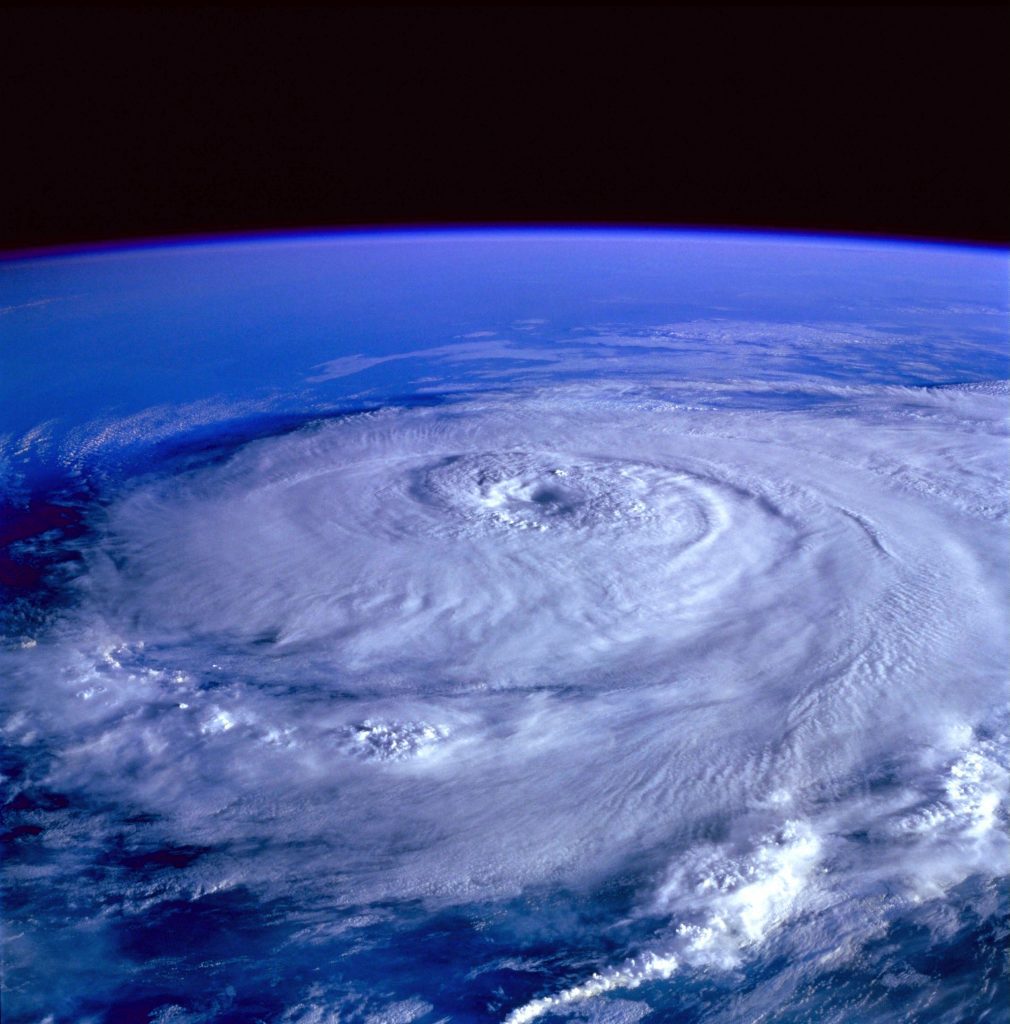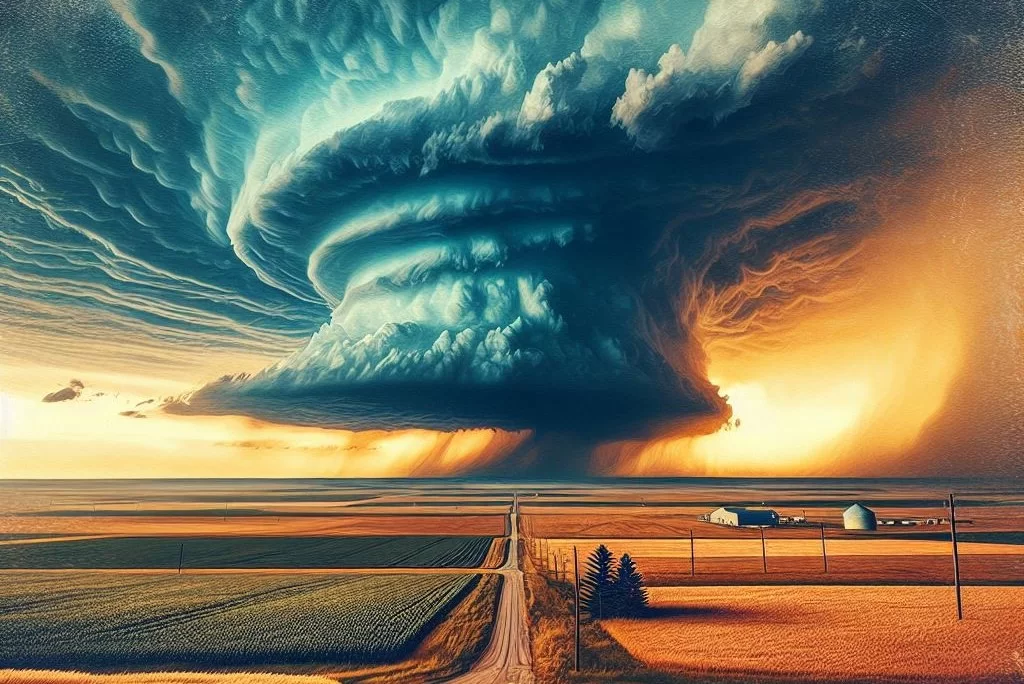
What are Hurricanes
Wikipedia says Hurricanes are:
Hurricanes are a rapidly rotating storm system characterized by a low-pressure center, a closed low-level atmospheric circulation, strong winds, and a spiral arrangement of thunderstorms that produce heavy rain or squalls.
NOAA tells it simply:
When the maximum sustained winds of a tropical storm reach 74 miles per hour, it’s called a hurricane. Hurricane Season begins on June 1 and ends on November 30, but these powerful storms can occur before and after the official season. A hurricane can be an awesome and destructive force of nature. Be prepared. Visit Ready.gov
NOAA
Basics
A hurricane is a very large storm! It can be up to 600 miles across and have strong winds spiraling inward and wind speeds of 75 to 200 mph! Each hurricane can last for about a week or so moving 10-20 miles per hour over the open ocean. Hurricanes get stronger by gathering hear from the ocean moisture and grow from first Tropical disturbances to Tropical Depressions to Tropical Storms to then finally Hurricanes. Hurricanes rotate in a counter-clockwise direction around an “eye” in the Northern Hemisphere and clockwise direction in the Southern Hemisphere. The center of the storm is called the eye of the storm and it is the calmest part. In fact, you could get a sunburn in the eye of the hurricane but then 20 minutes later be facing 150 mph winds and tons of rain!
Hurricanes
Hurricanes are fierce and destructive. They are no joke. When it comes to hurricanes, we must take all of it seriously, because millions of lives in their paths are at stake. If it wasn’t for the amazing technology we have this day and age for tracking them, things would be much worse. Still, we must learn more about them and know what to do.
A Hurricane is a large rotating storm with high speed winds that forms over warm waters in tropical areas. Hurricanes have sustained winds of at least 74 miles per hour and an area of low air pressure in the center called the eye. The scientific name for a hurricane is a tropical cyclone. Hurricanes weaken when entering areas of high pressure. Hurricanes are most destructive with how they carry in 5-15 feet of water from the ocean and flood the coasts.
Strengths

Tropical Disturbance: A cluster of weak storms that have gathered together and have shown to be strengthening. In order to become a Tropical Disturbance they need to show that their pressure (mbs) is decreasing and that the storm is intensifying.

Tropical Depression: A strong cluster of storms that have gathered together into a larger more dense cluster of storms that actually are beginning to rotate very slightly and their winds have picked up to about 40 mph. The storm is increasing in strength and growing in size.

Tropical Storm: Now the storm has actually formed into one rotating storm producing winds up to 73 mph and larger waves with and ever so decreasing pressure. The storm could be continuing to strengthen and NHC (National Hurricane Center) could send out warnings on coastal regions for this kind of storm. The eye is still usually not visible in a tropical storm.

Hurricane: Now it is a large rotating storm with high speed winds that forms over warm waters in tropical areas. Hurricanes have sustained winds of at least 74 miles per hour and an area of low air pressure in the center called the eye. The scientific name for a hurricane is a tropical cyclone. Hurricanes weaken when entering areas of high pressure. Hurricanes are most destructive with how they carry in 5-15 feet of water (called storm surge) from the ocean and flood the coasts. The eye is usually visible and hurricanes can grow up to CAT 5 before weakening. Average lifespan is about 7 days. About 10 for the whole process.

Why Learn about This?
Hurricanes are considered the largest storm systems on planet earth and the most destructive in most cases. Hurricanes are monsters and we must learn how to beat the storm. Here, you can learn what Hurricanes are, what destruction they can cause, what categories there are, how to prepare for one, what warnings and watches are you should watch out for, What things you should know before hurricane season, what to do if you are told to evacuate, what to do if you live in a hurricanes presumed path, and what to do after a hurricane and how to recover from it. The time is now to know about it, later may be too late. Even if you don’t live on coastal regions, your friends and family may. Knowing what to do could save lives.
Learn More!
Weather Center is committed to following hurricanes with you. Even though Weather Center is mainly going to focus on Texas, it will still cover major hurricanes else where. 🙂
Learn more on Weather Center’s extensive page Hurricane Safety!

Learn More Weather 101!
Types of Weather Section was made to inform viewers about all forms of severe weather that may be experienced or discussed about in WC posts! Here you can become weather aware and feel more prepared for severe weather! Each section includes details, graphics, videos, and resources to help the reader fully grasp the information given to them. Read more today!
[jp_post_view]